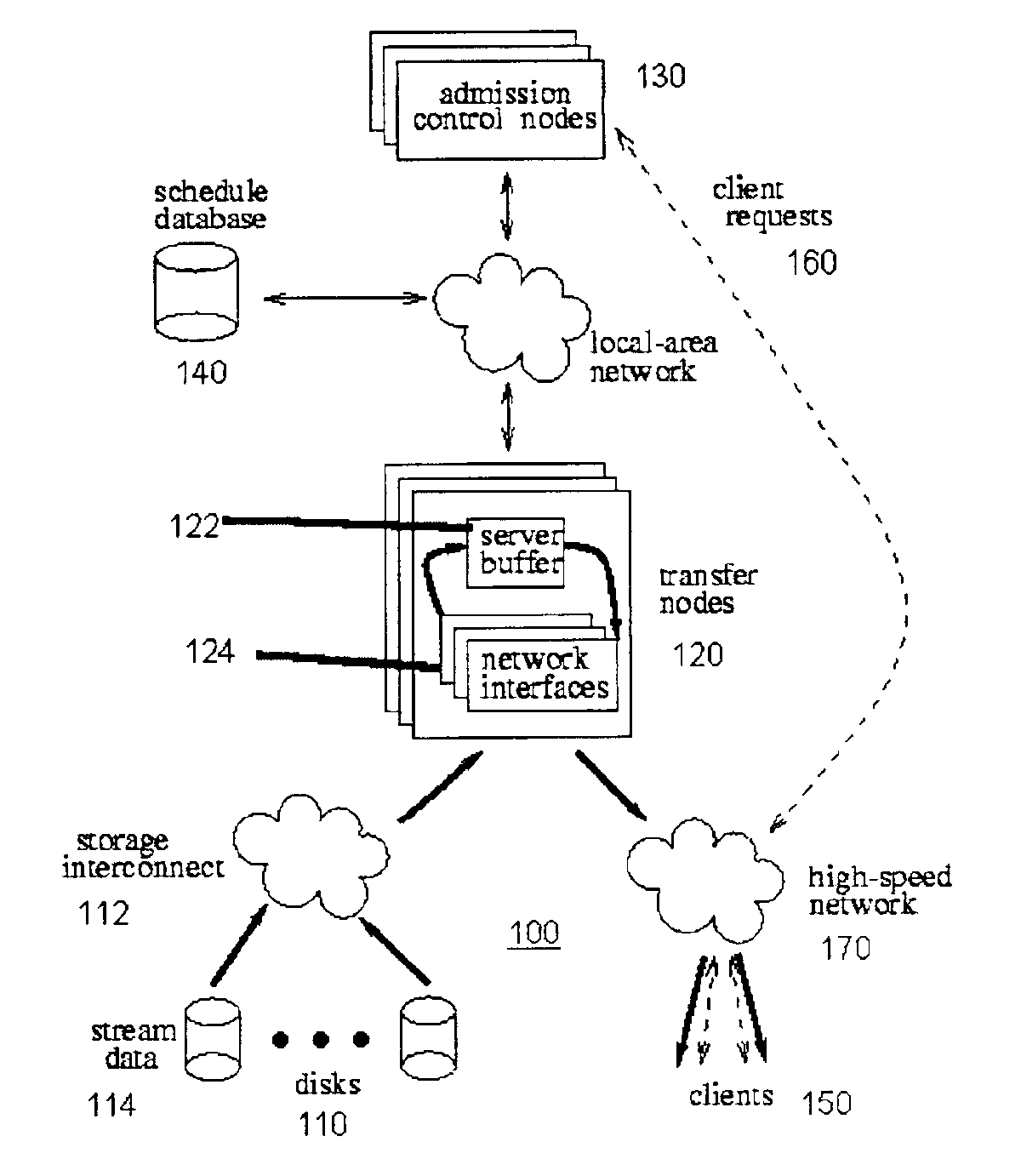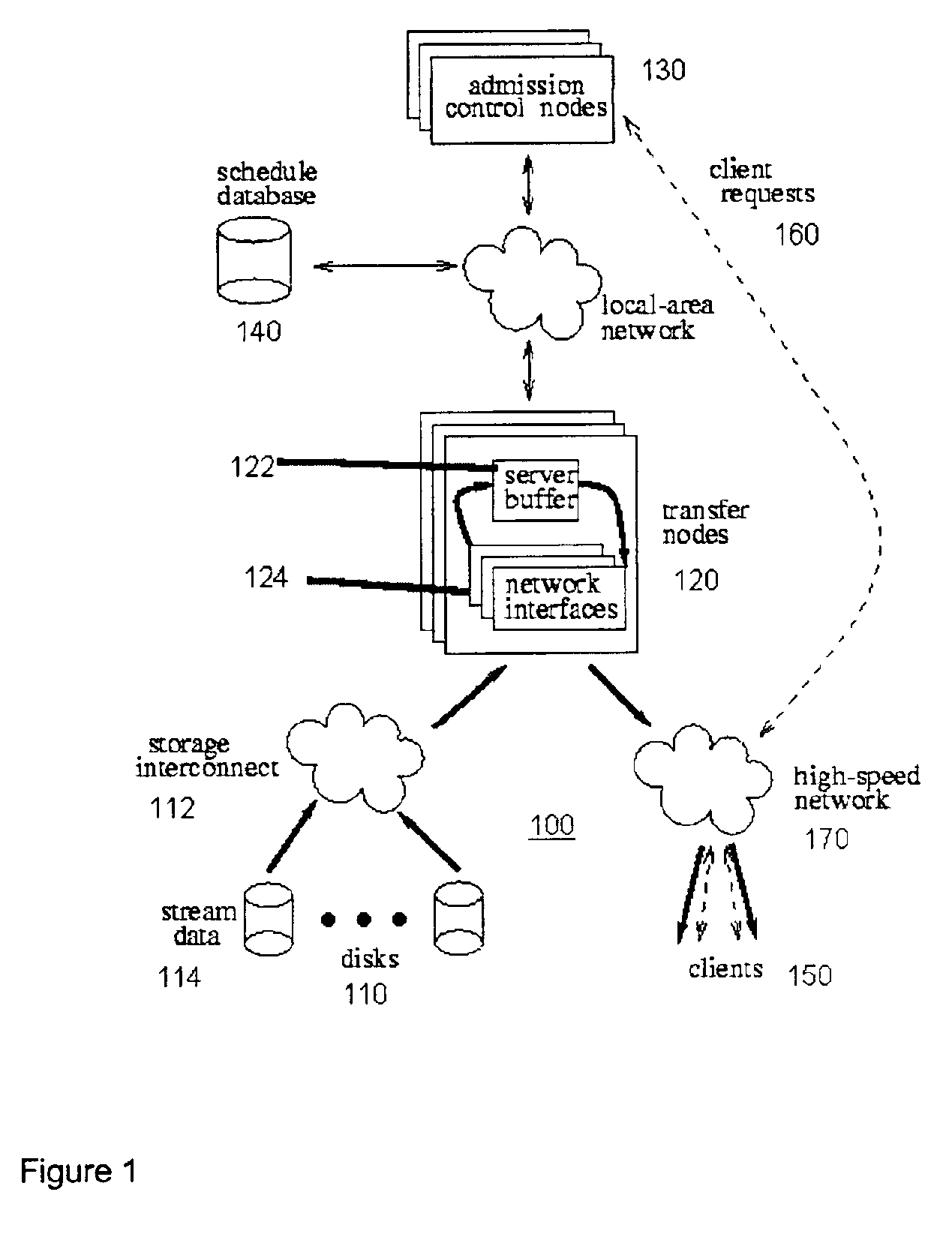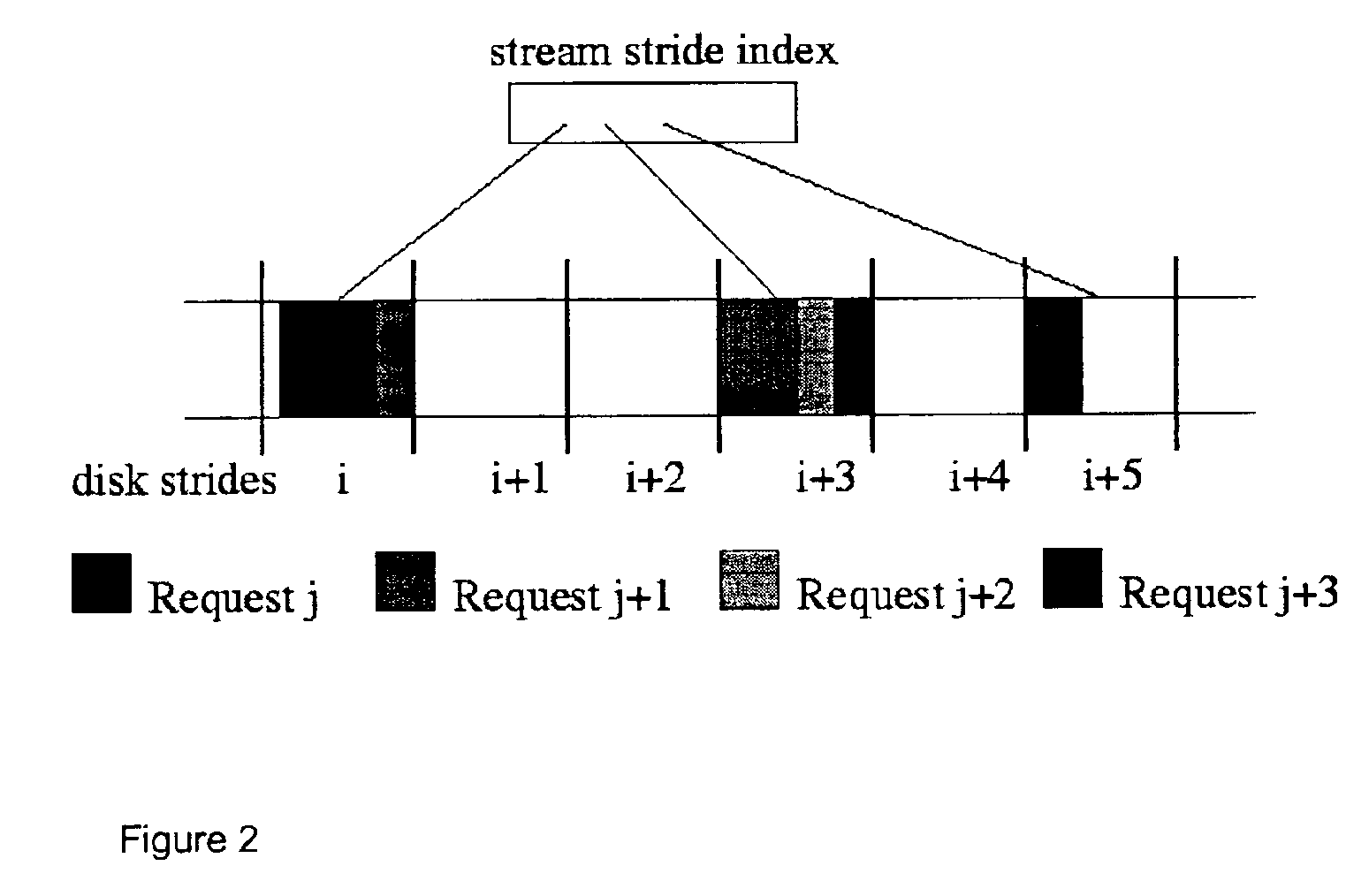Streaming server
a network server and server technology, applied in the field of network servers, can solve the problems of data redundancy and extra reserved device channel bandwidth, and ensure uninterrupted system operation, so as to prevent excessive smoothing and maximize the average number of users supported
- Summary
- Abstract
- Description
- Claims
- Application Information
AI Technical Summary
Benefits of technology
Problems solved by technology
Method used
Image
Examples
examples
[0120]The examples are described for the purposes of illustration and are not intended to limit the scope of the invention.
[0121]A media server system or stream server system was built in order to evaluate the resource requirements of the different striping techniques. The modules were implemented in about 17,000 lines of C++ / Pthreads code on AIX4.1, and ran on a single node. The code was linked either to the University of Michigan DiskSim disk simulation package, which incorporated advanced features of modern disks such as on-disk cache and zones for simulated disk access time measurements, or to hardware disks through their raw device interfaces. The indexing metadata were stored as regular Unix files, and during operation were kept in main memory. The MPEG-2 decoder from the MPEG Software Simulation Group was used for stream frame size identification.
[0122]The basic responsibilities of the media server included file naming, resource reservation, admission con...
PUM
 Login to View More
Login to View More Abstract
Description
Claims
Application Information
 Login to View More
Login to View More - R&D
- Intellectual Property
- Life Sciences
- Materials
- Tech Scout
- Unparalleled Data Quality
- Higher Quality Content
- 60% Fewer Hallucinations
Browse by: Latest US Patents, China's latest patents, Technical Efficacy Thesaurus, Application Domain, Technology Topic, Popular Technical Reports.
© 2025 PatSnap. All rights reserved.Legal|Privacy policy|Modern Slavery Act Transparency Statement|Sitemap|About US| Contact US: help@patsnap.com



